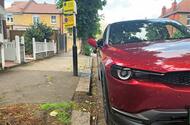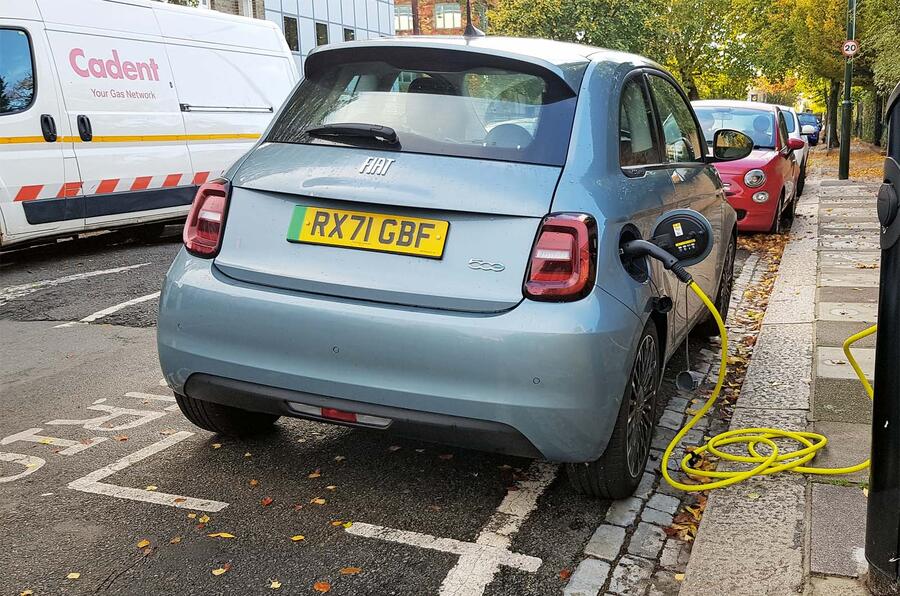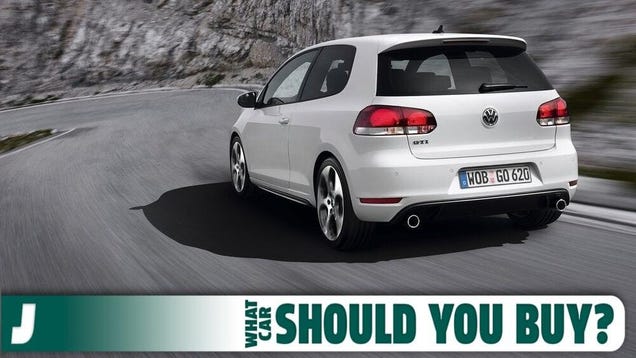Featured
Fed Rate Cut Impact on Car Buyers | Giga Gears

Good morning! It’s Thursday, September 19, 2024, and this is The Morning Shift, your daily roundup of the top automotive headlines from around the world, in one place. Here are the important stories you need to know.

Councils and ICE drivers pose a threat to lamp-post chargers for electric vehicles
 Faulty chargers and empty charging bays in hard-to-park areas are drawing criticism
Faulty chargers and empty charging bays in hard-to-park areas are drawing criticism
With more than 40% of UK homes lacking a driveway, lamp-post chargers are billed as the solution for drivers to refuel their EVs locally. However, could reports of failing chargers and ICE car drivers being angry at losing parking bays undermine public support for them?
In July, west London’s Hounslow Council cut off the power to a number of lamp-post chargers in Chiswick after residents reported that they had stopped working.
Following an inspection, the council concluded that heavy rainfall had entered the chargers, causing them and the street lamps to which they were connected to fail.
The council has since restored power to the lamps while Ubitricity, the Shell-owned charger provider that installed the chargers, carries out repairs.
In April, residents in the same borough protested about the creation of lamp-post charging bays because they resulted in the loss of eight parking spaces for ICE cars on a street that had few EVs. The council promised to respond but didn’t reply to Autocar’s request for comment.
These aren’t the first instances of lamp-post chargers attracting negative publicity. In November last year, Portsmouth City Council disconnected 98 lamp-post and bollard-mounted chargers due to safety concerns.
The council said it had instructed provider Ubitricity to resolve the issue “as soon as possible”. However, seven months later, only 41 of those chargers had gone back online.
A spokesperson for the council said: “We hope to have restored power to the remaining chargers by the end of August.”
An Ubitricity spokesperson, commenting on the problems in both areas, said: “We are working closely with the local authorities to restore service to these areas.”
The UK has around 20,000 lamp-post chargers. They offer charging speeds of around 5kW and are provided by operators such as market leader Ubitricity and Char.gy, which installed London’s first such charger in 2018.

To finance more, councils can apply for a share of the UK government’s £350 million Local Electric Vehicle Infrastructure (Levi) Fund.
“Levi is a game-changer,” said Joe Michaels, CEO of Joju, a public charger installation and maintenance company. “The government is keen to increase the number of public chargers and lamp-post charging is an easy win. We’re feeling very positive about the future.”
Also helping to drive council uptake is that new-generation LED street lamps use less energy than the old bulb types, which means more is available for EV charging.
Michaels insists most lamp-post chargers are reliable. He said: “Water getting into the Chiswick posts was probably the result of poorly made posts or a poor installation.”
More recently, UK Power Networks, the power distributor for thousands of street lamps across London and the south, gave the green-light for more chargers to be installed, even on older lampposts.
Its report, conducted with Shell ubitricity, came after local authorities were ordered to stop installing chargers on older lampposts with legacy wiring due to safety concerns. The report concludes, however, that there are no safety concerns, and has told all 133 authorities - which own and operate the lampposts - within its network to continue with their planned roll outs.
Challenges still remain, however. The AA has reported that despite a recent price fall to around 59p per kWh, peak-time energy tariffs for kerbside charging can make running an EV more expensive than an equivalent ICE car. As such, it has asked the government to cut VAT on tariffs.
In 2022, Ubitricity introduced smart charging, which allows residents to schedule their charging session to start during the company’s off-peak overnight tariff.
As Chiswick’s residents have pointed out, lamp-post chargers and their dedicated parking bays often go unused and empty too – but this is of course a classic chicken-or- egg scenario.
“There’s no question that an empty bay in an otherwise crowded street annoys people,” said Michaels. “However, some councils actually see an empty bay as an incentive for non-EV drivers to consider making the transition if it’s going to solve their parking crisis.”
Best Car for More Space: Recommendations for GTI Lovers | Giga Gears

Nick is on his third VW GTI. His current one has 120,000 miles and it’s time to move on to something else, he wants something with a similar level of sportiness but needs more space to haul things. What car should he buy?

Kia’s President Brings Toyota-like Confidence: Editor’s Letter
 Ho Sung Song has led a dramatic brand reinvention since he took the reins in 2020
Ho Sung Song has led a dramatic brand reinvention since he took the reins in 2020
Despite being vast industrial global companies, car makers can still have the impact of an individual felt.
Toyota is a great example, the premiership of the effervescent Akio Toyoda throughout the 2010s adding a previously unimaginable human side to this most corporate of car firms.
The main figure at the heart of Kia’s rise this century was designer Peter Schreyer, who was positioned as de facto leader of the company and successfully moved the Korean firm from a dowdy budget brand to a more aspirational mainstream one.
Kia now has another charismatic individual moving it forward again: Ho Sung Song, Kia's president and CEO.
He took the top job in 2020 after 13 years at the company and has overseen a new brand image that’s shaken Kia’s budget feel for good. Song has used the introduction of EVs to go even bolder; the likes of the EV6 and EV9 can see off far more costly and staid rivals, while the EV3 feels good enough to become a Volkswagen Golf-style default choice in the electric era.
Kia is making BMWs for the people (its latest design boss Karim Habib is formerly of Munich…) while still very happy to fill the void left by Ford in making cars at volume. More impressively, Kia’s ceiling for making larger and more expensive cars that people are willing to buy and can be sold profitably feels much higher than Ford’s.
It’s easy to see why Kia has so much confidence when you spend time in Song’s company. Friendly and hospitable, Song will answer questions honestly and directly and knows how the world works outside Korea; his stints in several major global markets including the UK for his previous employer Hyundai helped shape that.
Tariffs on Chinese-made electric cars imported into the EU are “fair game” to counter state support, while the UK’s controversial mandate on the sale of electric cars is a good thing in Song’s eyes as it ultimately forces the market. He sees city cars as an essential part of a manufacturer’s offering to ensure cars are accessible and affordable in the electric era, so is desperate to launch a sub-€20,000 model by 2030.
He’ll just as happily talk golf; like many Koreans, Song is a golf nut and plays to a single-digit handicap even as a CEO working 12-hour days.
‘Why not?’ often comes back as the response when further challenges or markets to enter are put to Song, but for now the next horizon is vans.
In January, Kia revealed plans for a new family of electric vans that will start to see production late next year, sold in dedicated van dealerships.
It's a good time and a good way to get into the van market, as while electric propulsion is the mandated future, it will stay a minority choice for longer than cars, due to cost and range issues in a sector where time on the road and total cost of ownership are everything.
While Europe is the focus for vans, they can have an impact elsewhere. When Song looks outside the window of his EV9 (he uses the massaging seats as an antidote to Seoul’s terrible traffic) he wouldn’t see a van at all, rather small trucks with different beds on the back and a cab on the front.
The likes of the Hyundai Porter and Kia Bongo are among Korea’s best-selling vehicles, yet crash safety regulations will kill them off from 2027, and Kia senses an opportunity here for the likes of the PV5, too. Something will need to replace them, and why not the PV5?
Kia can start small, learn and build as the electric van market grows, although taking on Ford here is perhaps Kia’s biggest task yet. Though as one company official told me, Kia’s goal is never to match the best, but to beat it.
McLaren Partner Neom: A Futuristic Tech City Resembling Holiday Inn Express in Glendale, CA

If you follow motorsports you’ve probably seen the word “Neom” somewhere. It’s pretty prevalent in trackside billboards, and it is the title sponsor of McLaren’s Formula E and Extreme E efforts. You might not, however, have known what Neom is. Aside from another avenue for Saudi Arabia to sportswash its horrific…

